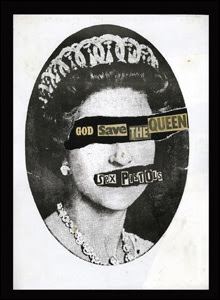
The Sex Pistols' song that helped spur the punk rock revolution of the late 70's serves as inspiration for an art show Panic Attacks! at the
Barbican Art Gallery in London. They are will be displaying work from Cindy Sherman, Robert Mapplethorpe, and Peter Hujar just to name a few. Whether you are a fan of the music or not it is hard to dispute the impact the movement had on culture and art.
BBC News has a
slide show that features a sampling of the pieces at the show. It made me want to see more, but alas, a trip across the pond is not in my immediate future.
Panic Attacks! will run until September 9th.
 Creating any wall arrangement can be a quite a project. Adding an angle on top of it makes it even more of a challenge. Better Home and Gardens has some great tips on how to make a knock out photo gallery for your stairway. Taping up paper templates first to confirm your arrangement can save your walls from unnecessary holes.
Creating any wall arrangement can be a quite a project. Adding an angle on top of it makes it even more of a challenge. Better Home and Gardens has some great tips on how to make a knock out photo gallery for your stairway. Taping up paper templates first to confirm your arrangement can save your walls from unnecessary holes.Tips for Creating a Stairway Photo Gallery:








